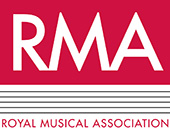
Our History

What is now the RMA was founded as the Musical Association in 1874, during a period of growing interest in studying the history, theory, and science of music. It was preceded by the musicological society of the Netherlands, and in Britain by the short-lived Musical Institute and the Musical Society of London. The Musical Association was the result of a determination, mainly on the part of John Stainer, to put the study of music on a more professional footing. Despite intervening developments, the Association has retained its original mission, to encourage and publish information on subjects connected to music; no limitation was imposed concerning these subjects, and among the earliest members were composers, performers, educationalists, and scientists as well as music theorists. It became the Royal Musical Association in 1944 by command of King George VI.
Stainer, after canvassing opinion, arranged a preliminary meeting and initially acted as secretary. Among those present of scientific bent were George Grove, William Pole, Sedley Taylor, and William Spottiswoode. Others present included William Chappell, of the publishing firm; the composer George Macfarren; and the educationalist and composer John Hullah, whose ‘Tonic Sol-fa’ was much debated in the Association’s early years. Following a general meeting (29 May 1874), the pianist, composer and scholar Charles Salaman was appointed secretary (he was later vice-president). The first President, until his death (1889), was the scholar and composer, former prodigy and teacher of Stainer, Frederick Arthur Gore Ouseley; Stainer succeeded him.
The Association quickly gathered about 70 members. In 1904 it was incorporated under the Companies’ Acts, defining the legal position and responsibilities of its council; membership then stood at c. 220. Membership has increased thanks to the growth of university music departments, and the general expansion of higher education including music colleges. By the 1970s membership stood at nearly 800, and the present total is over 1,000. In 1999 institutional student membership was added to make the Association more widely known to young researchers.
Stainer’s professional aims included publication of the Association’s activities, as the annual Proceedings of the Musical Association. Until 1965 meetings were held in London, and consisted of a single paper, duly published in Proceedings (with up to 1957 the subsequent discussion). Single-paper meetings continued with the addition of an annual conference from 1965, an initiative of the then President, Anthony Lewis; at first this also consisted of full-length lectures and a concert, but the Association, in line with most other academic conferences, has modulated to a structure of shorter papers, round tables, lecture-recitals, composition workshops and keynote lectures.
Today the Association also sponsors an annual Research Students’ Conference. Since the 1980s, focused study days have replaced single-paper meetings, and these, and the Annual Conference, have been held in several locations (usually University cities) as well as London. As a result, regional Chapters based elsewhere in England have declined, but the Scottish Chapter continues to thrive. The former Irish Chapter has been assimilated into the Society for Musicology in Ireland. An entirely new venture, the South-East Asia Chapter, held its inaugural meeting in 2014 at the Raffles Institute, Singapore. The Association has collaborated with other societies such as the Society of Music Analysis. In 1997 the Association was host to the International Musicological Society’s quinquennial congress at the Royal College of Music and Imperial College; proceedings were published by Oxford University Press as Musicology and Sister Disciplines, edited by David Greer.
The Association’s primary publication is Journal of the Royal Musical Association (JRMA), founded in 1987 as a biannual refereed journal in place of Proceedings. Its next publishing enterprise was of actual music; in 1948, publication was proposed of ‘an authoritative national collection of the classics of English music’. Happily ‘English’ was displaced by ‘British’ before the first volume of Musica Britannica appeared in 1951 with financial support from the Arts Council. Originally only ten volumes were intended; volume 100 appeared in 2016. Since 1976 Musica Britannica was reconstituted as an independent charitable trust, the trustees including the President and Treasurer of the RMA.
Among other publications, the Royal Musical Association Research Chronicle first appeared in 1961, with the intention to publish annually what its first editor, Thurston Dart, called ‘musicological raw material – lists, indexes, catalogues, calendars, extracts from newspapers, new fragments of biographical information, and so on’. It has received support from the Fellowes Memorial Fund, the Vaughan Williams Trust, and the British Academy. Thanks to a bequest of royalties from Dart’s estate, the RMA established its series of monographs.
The Beethoven bicentenary (1970) was marked by publishing a facsimile of the ‘Kafka’ sketchbook, in collaboration with the trustees of the British Museum. The RMA marked its own centenary with an enlarged volume of Proceedings and, with the Scolar Press, a facsimile of the ‘Tenbury’ score of Handel’s Messiah. For Mozart’s bicentenary (1991) the then president, Stanley Sadie, organized an international conference on London’s South Bank; the papers were subsequently published by Oxford University Press.
The Association recognizes scholarly achievements by its awards. These include the Jerome Roche memorial prize for a published article, the Dent medal, in association with the International Musicological Society, for scholars in mid-career, and Honorary Membership for senior scholars (this was formerly Honorary Foreign Membership, but can now be offered to British scholars as well). Another benefaction established, from 1999, the Peter Le Huray memorial lectures, now delivered by an internationally recognized scholar at the Annual Conference, as is a lecture by the previous year’s winner of the Dent medal.
***
Adapted from Alec Hyatt King and Julian Rushton, ‘Royal Musical Association’, Revised New Grove Dictionary of Music and Musicians (Macmillan, 2000). For more on the history of the Royal Musical Association, see:
J. P. Baker, ‘The Musical Association: a Fifty Years Retrospect’, Proceedings of the Musical Association, l (1923-4), 129-38
E. Olleson, ed., Royal Musical Association Centenary Essays (London, 1975)
H. M. T. Cobbe, ‘The Royal Musical Association 1876-1901’, Proceedings of the Royal Musical Association, cx (1983-4), 111-17
